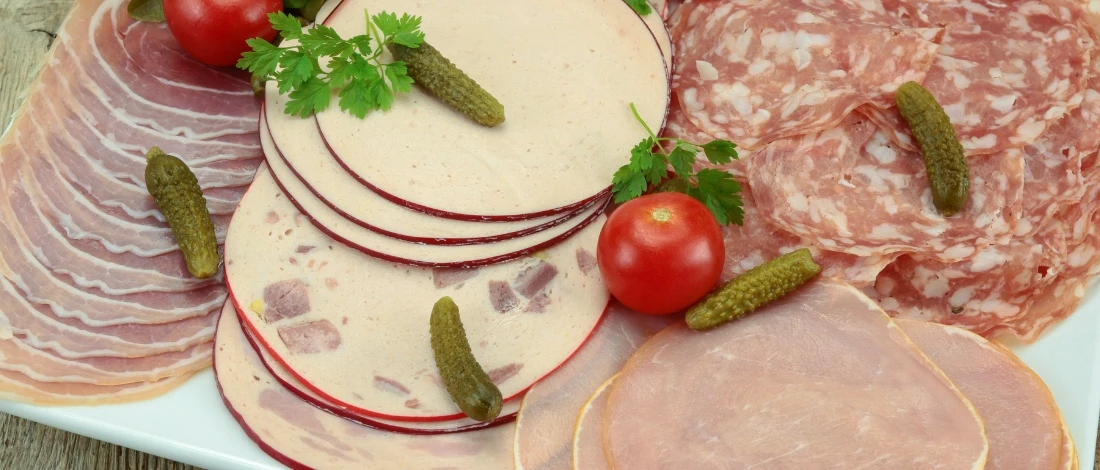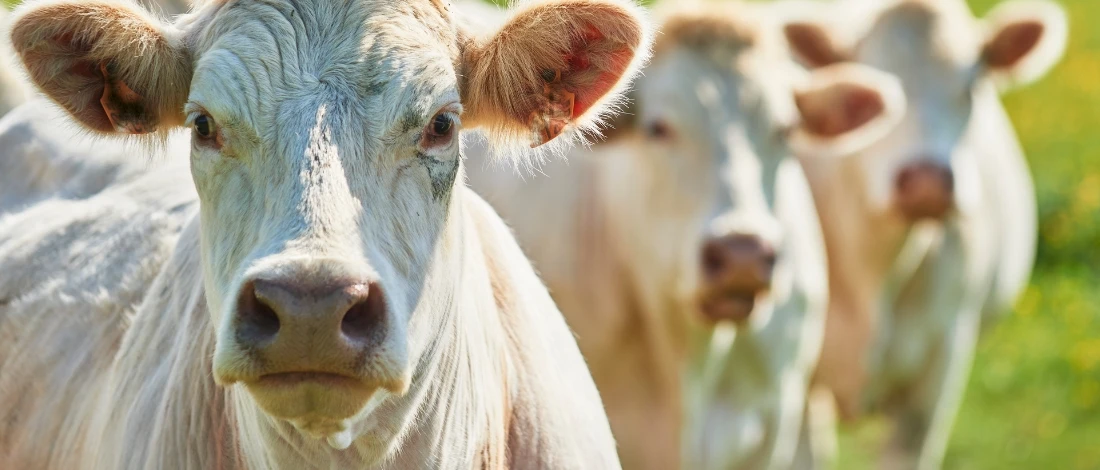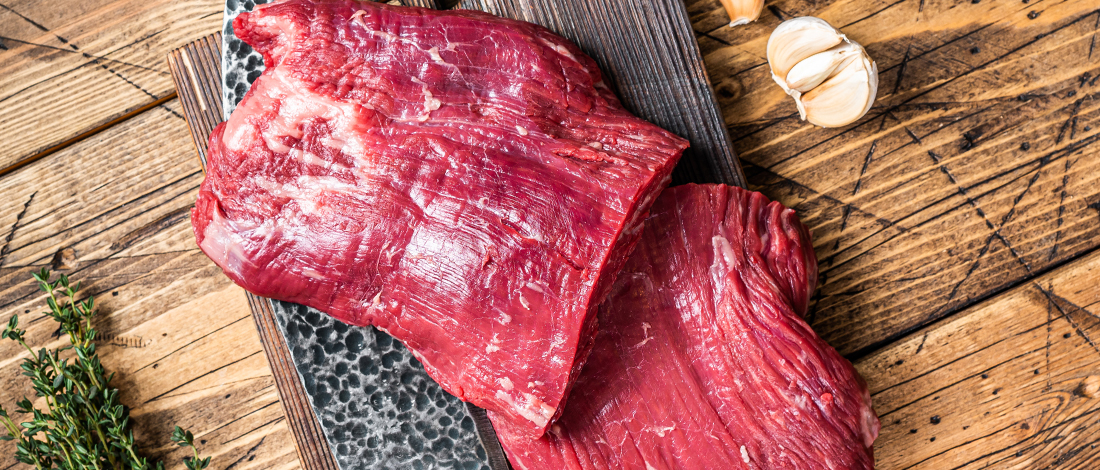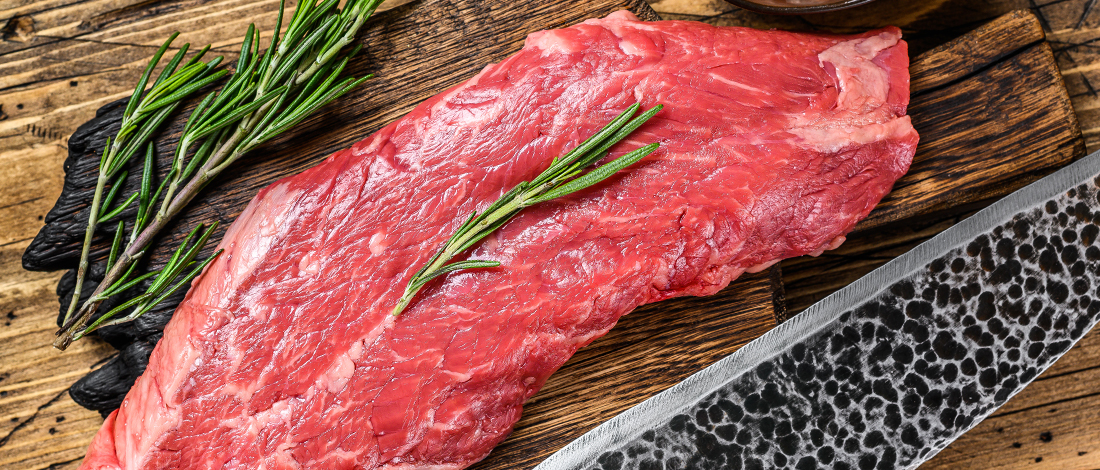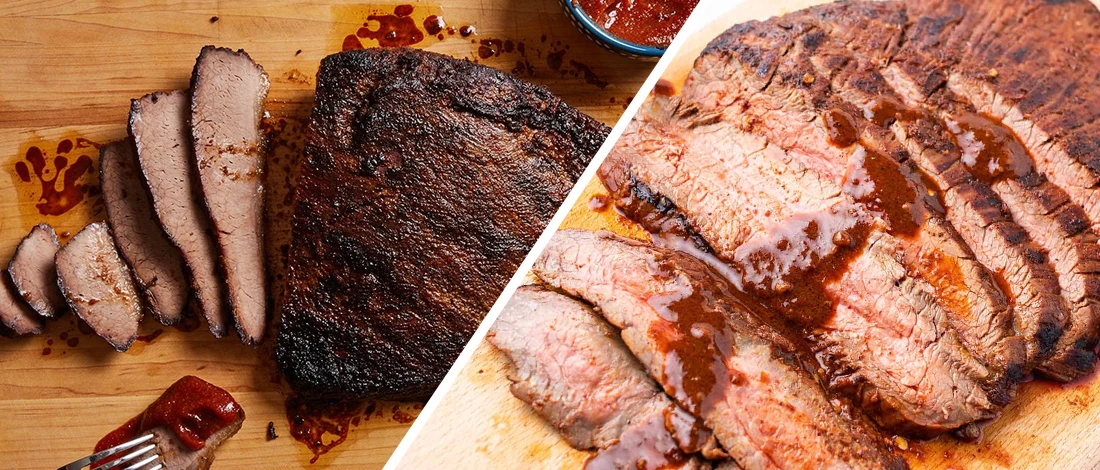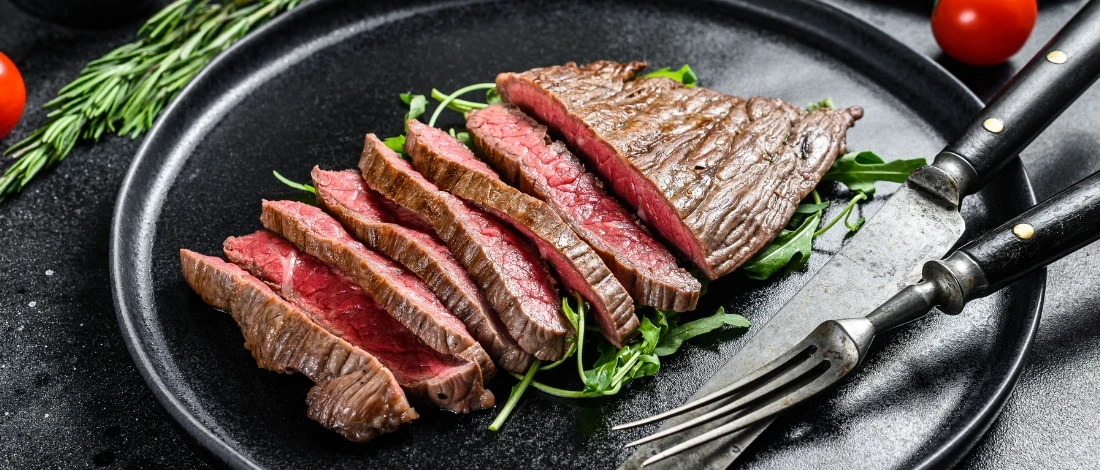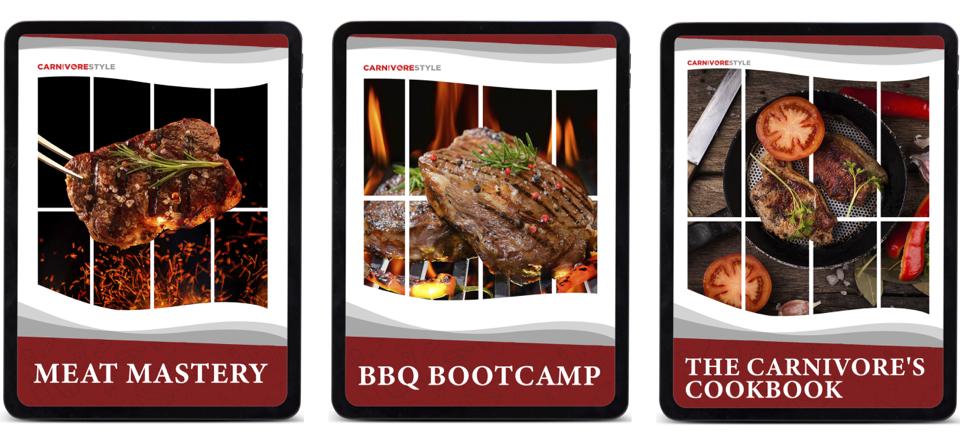As someone who has spent years immersed in the world of professional cooking, I have had the privilege of honing my expertise and developing a deep understanding of various cuts of meat.
I've come to intimately understand the differences between various cuts, including the spotlight today on chuck steak and flank steak. So, join me as we embark on a journey through the textures, flavors, and cooking secrets that set these two cuts apart.
Quick Summary
- Chuck steak boasts rich marbling and is tender when slow-cooked while flank steak has lean muscle fibers, ideal for quick, high-heat cooking methods.
- Chuck steak's robust beefy flavor shines in slow-cooked dishes like stews and roasts. Flank steak's milder taste serves as a versatile canvas for absorbing marinades and spices.
- Chuck steak's higher fat content provides rich flavor, while flank steak's lower fat content aligns with lean protein preferences.
8 Differences Between Chuck and Flank
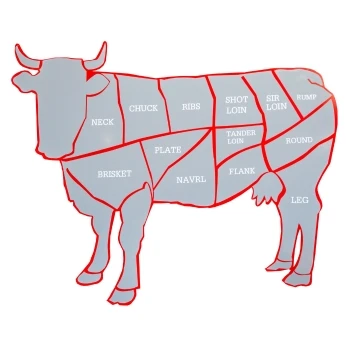
1. Location on the Cow
Understanding the origin of these cuts begins with their location on the cow. Chuck steak, known for its exceptional marbling and deep flavor, originates from the shoulder area of the animal. This marbling, a network of intramuscular fat, contributes to the steak's tenderness and rich taste.
Flank steak, on the other hand, takes its place along the abdominal muscles, stretching from the lower chest to the hip area. This location, characterized by leaner muscle fibers, gives flank steak its distinctively firm texture.
2. Names
Names often carry hints about a cut's qualities and culinary potential. Chuck steak's name is derived from its source in the chuck primal cut, showcasing its robust marbling and flavor. Chuck has a number of nicknames, such as Seven-Bone steak (derived from its bone structure), flatiron steak, and butcher's steak. It also has been called a blade steak, shoulder steak, chuck eye steak, chuck fillet, and chuck roll steak.
On the opposite end, the name "flank steak" directly refers to its positioning along the side of the cow, highlighting its lean and elongated nature. Alternatives to this name include London Broil, Jiffy steak, Fajita meat, and Cascarilla meat. It can also be known as Bistro steak, flank filet, plank steak, Bavette, Bolar blade, and Arrachera.
3. Texture
Texture plays a pivotal role in the enjoyment of any dish. Chuck steak's marbling and connective tissues work in harmony to produce a tender, melt-in-the-mouth texture. As it is slow-cooked, these elements break down, resulting in a succulent eating experience.
In contrast, flank steak's lean muscle fibers contribute to a denser texture. To ensure tenderness, proper cooking techniques, such as slicing against the grain, are crucial.
4. Flavor
The flavor is the heart of the matter when it comes to these cuts. With its marbling, Chuck steak delivers an intense, beefy flavor that flourishes when subjected to slow-cooking methods. The marbled fat renders during cooking, infusing the meat with rich taste and moisture.
Flank steak offers a more subtle flavor profile due to its leanness, making it an ideal canvas for marinades and seasonings that can elevate its taste.
5. Best Cooking Methods
Choosing the right cooking method is essential to unleash the full potential of these cuts. Chuck steak's marbling and connective tissues shine when exposed to low and slow cooking techniques such as braising, stewing, or roasting. These methods break down the tough fibers and transform the cut into a tender masterpiece.
Conversely, flank steak thrives when cooked quickly with high heat. Grilling, searing, or broiling are excellent methods to achieve a caramelized exterior while maintaining a juicy interior.
Also Read: How to Grill Chuck Steak
6. Versatility
Each cut brings its versatility to the kitchen table. Chuck steak's tenderness makes it a star in comfort foods like stews, pot roasts, and slow-cooked dishes. Its ability to absorb flavors makes it a dependable choice for hearty and aromatic preparations. You will also find it used in ground beef recipes like burgers, meatloaves, and tacos.
Flank steak's lean nature, coupled with its unique texture, opens doors to diverse dishes. Its mild flavor allows it to absorb the flavors of marinades and seasonings easily. It excels in fajitas, stir-fries, tacos, and salads, adapting to a wide range of global cuisines.
7. Price
Budget-conscious consumers often factor in the cost when making their choice. Chuck steak's affordability is rooted in its tougher nature and the longer cooking times it demands. This economic advantage makes it an attractive option for those looking to create flavorful meals without straining their wallets.
Flank steak, due to its lean quality and quicker cooking requirements, is usually priced slightly higher.
8. Nutrition

For those mindful of their dietary intake, the nutritional aspect comes into play. Chuck steak's marbling translates to higher fat content. While fat often carries negative connotations, the marbling brings a depth of flavor and energy to the meat.
Here are the chuck steak nutrition facts for a 3 oz portion [1]:
- Calories: 235
- Total Carbs: 0g
- Protein: 21.2g
- Fat: 16.7g
- Fiber: 0g
- Net Carbs: 0g
In contrast, flank steak's leanness results in a lower fat content, making it a suitable choice for individuals aiming for leaner protein consumption.
Here are the nutrition facts for 3 ounces of flank steak [2]:
- Calories: 201
- Total Carbs: 0g
- Protein: 23.8g
- Fat: 11g
- Fiber: 0g
- Net Carbs: 0g
"While a little pink meat is acceptable, you will need to cook the ribs longer if there is a lot of pink meat or if the meat is resistant to easily separating from the bone."
- Emeril Lagasse, American Chef
Recipe Suggestions

Chuck Steak
- Classic Beef Stew:
Chuck steak's marbling and connective tissues make it an excellent choice for hearty dishes like a classic beef stew. When slow-cooked, the meat becomes tender and imparts its rich flavor to the stew, creating a comforting and flavorful meal. - Braised Chuck Steak Tacos:
Transform chuck steak into a delicious taco filling through braising. The slow-cooking process breaks down the tough fibers, resulting in succulent, shredded beef that pairs perfectly with taco seasonings. The rich taste of chuck steak elevates the taco experience. - Red Wine-Braised Chuck Roast:
A chuck roast, a larger cut from the chuck area, is perfect for a red wine-braised dish. The marbling and texture of the meat absorb the flavors of the red wine and aromatic vegetables, creating a savory and sophisticated dish that's perfect for special occasions.
Flank Steak
- Grilled Flank Steak Fajitas:
Flank steak's lean texture is ideal for grilling, and its mild taste is the perfect backdrop for vibrant fajita flavors. Thinly sliced and marinated, grilled flank steak becomes the star of sizzling fajitas, served alongside colorful bell peppers and onions. - Asian-Inspired Stir-Fry:
The quick-cooking nature of flank steak makes it an excellent choice for stir-fry dishes. Cut into thin strips and cooked over high heat, flank steak retains its tenderness while absorbing the flavors of soy sauce, ginger, and garlic in an Asian-inspired stir-fry. - Chimichurri Flank Steak Salad:
Flank steak's mild flavor complements the bright, herbaceous notes of chimichurri sauce. Pair a grilled, sliced flank steak with a vibrant salad featuring fresh greens, tomatoes, and a generous drizzle of homemade chimichurri for a refreshing and satisfying meal.
FAQs
What Is Better Than Flank Steak?
When it comes to alternatives, different cuts like ribeye, sirloin, or New York strip can offer unique textures and flavors that some may find preferable over flank steak.
Why Is Chuck Steak So Cheap?
Chuck steak's affordability is due to its location and characteristics. It comes from the tougher shoulder area of the cow, and its longer cooking times are factors contributing to its lower price point.
Can Flank Steak Become Tough?
Answer
References:
- https://fdc.nal.usda.gov/fdc-app.html#/food-details/171228/nutrients/
- https://fdc.nal.usda.gov/fdc-app.html#/food-details/168610/nutrients/


